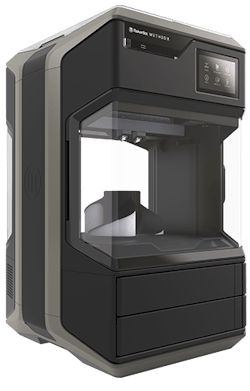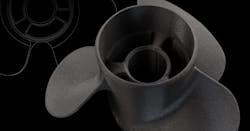Method and Method X printers gain carbon-fiber capabilities
What’s new? New Method editions capable of printing carbon-fiber-reinforced nylon parts. They feature a new higher-temperature, composite extruder that is optimized to handle abrasive materials. It has hardened metal drive gears, a metal filament switch and an interchangeable hardened steel nozzle. The extruder also is available for the original Method and Method X 3-D printers. In addition, the printers have a new heated-chamber annealing feature. Method’s dry-sealed filament bays help to keep the moisture-sensitive nylon carbon fiber material dry, resulting in better print quality and reliability.
Benefits The production of strong, heat-resistant, true-to-design parts with excellent finishes. Carbon-fiber material from MakerBot or other manufacturers can be used as a lightweight, lower-cost alternative to metal for structural and under-the-hood parts such as vehicular brackets and inspection gauges, as well as manufacturing tools such as robotic end effectors.
MakerBot Industries LLC, Brooklyn, N.Y., 347-676-3456, www.makerbot.com
| Vital statistics | ||
| Method | Method X | |
| Maximum temperature of heated chamber | 140 degrees Fahrenheit | 230 degrees Fahrenheit |
| Weight | 65 pounds | 65 pounds |
Product dimensions | 17.2 inches by 16.3 inches by 25.6 inches | 17.2 inches by 16.3 inches by 25.6 inches |
| Maximum build volume | 7.5 inches by 7.5 inches by 7.75 inches (single extrusion), 6 inches by 7.5 inches by 7.5 inches by 7.75 inches (dual extrusion) | 7.5 inches by 7.5 inches by 7.75 inches (single extrusion), 6 inches by 7.5 inches by 7.5 inches by 7.75 inches (dual extrusion) |
| Maximum material flow rate | 50 cubic millimeters per second | 50 cubic millimeters per second |


